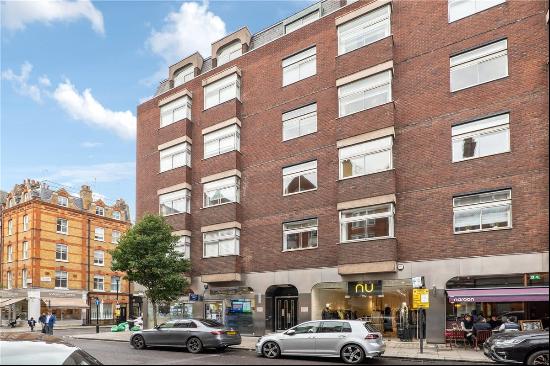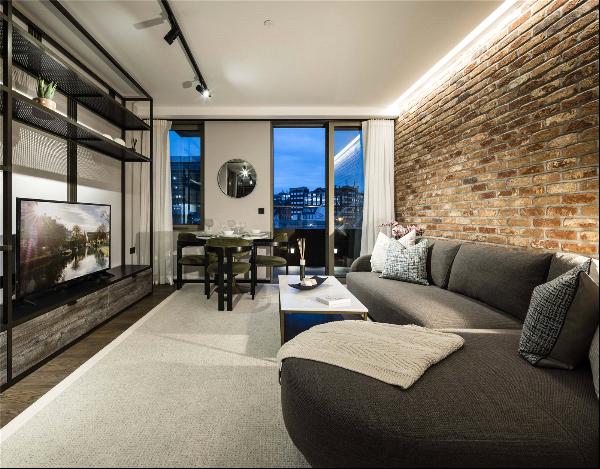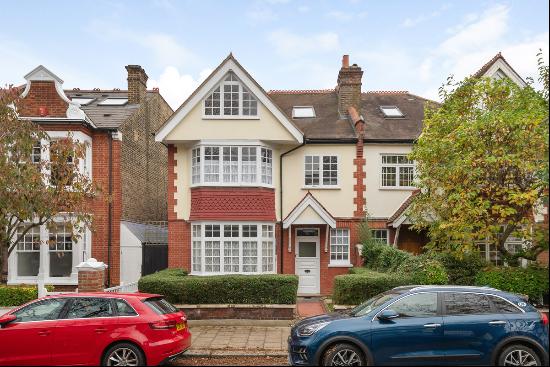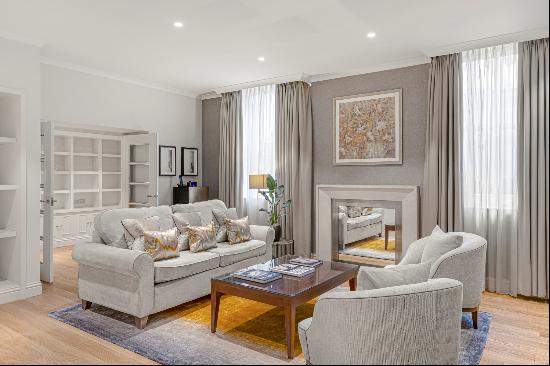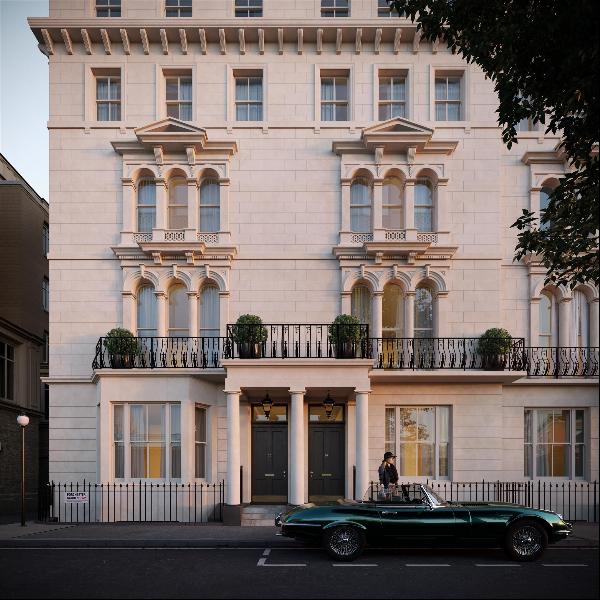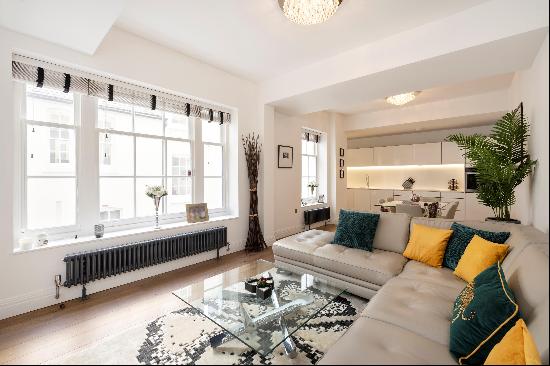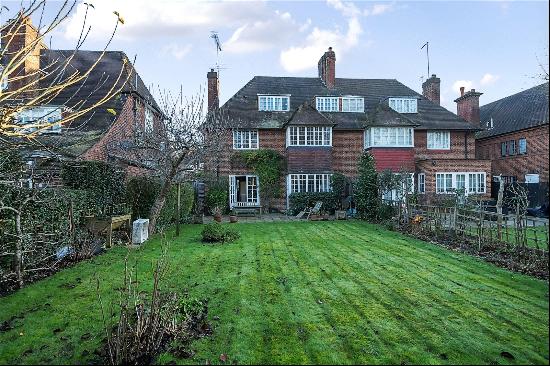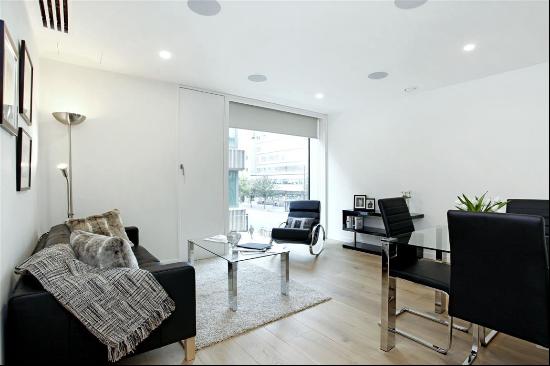
By Kate Youde
“Mixing patterns is a symphonic thing,” says Nathalie Farman-Farma. “You can put a lot in, but you need to have some repetitions or echoes so that it makes sense.”
The French-American textile designer followed her own advice when decorating her London home, a Grade II-listed Georgian town house in Chelsea, now on the market with Savills for £3.95mn. She repeated some of the many varied patterns that adorn the walls, floors, windows and furniture in different rooms. “It creates a better flow of space and it makes the house feel bigger in a way if there’s continuity,” she says.
Farman-Farma, founder of textile company Décors Barbares, moved to London from New York with her family in 2006, to raise her two young children in England. She was drawn to the three-bedroom house by its central location in St Leonard’s Terrace, with the short walk to shops on the King’s Road enabling her to “live a New York life” without using a car to run errands.

And then there was the home’s charm. “You feel like you’re living in a treehouse,” says Farman-Farma. The property has 1,800 sq ft of living space spread over five storeys, front and back gardens and a patio off the lower ground floor bedroom. There’s a well-established wisteria that covers most of one side of the house and a magnolia tree in the front garden.
Farman-Farma “leaned into the cosy Englishness” and reflected the setting by choosing floral fabrics for the interiors, though she didn’t want it to be “saccharine and twee”. It was a hard thing to pull off since “having fabrics and flowers on the walls was a little bit out of style by then. It’s making sure it’s not just a lady’s boudoir but somehow really makes sense to the house in quite a modern way,” she says.
The number of photos published of her home in numerous publications suggest she succeeded. The floral section of Phaidon’s recent Defining Style: The Book of Interior Design includes her favourite room, the primary bedroom, with walls upholstered in grey-and-white pine tree motif cotton by renowned 20th-century designer Madeleine Castaing. The book also features the dining room, which has a colourful floral toile decorating both the walls and windows. “I think when people think of floral, they think of me,” she says.

Farman-Farma moved back to the US a couple of years ago, and is now living in Connecticut and working in New York. She founded her textile brand in 2010 and some of the designs on the home’s cushions and chairs are her own. “I was always reupholstering things,” she says. “The children would come back [from school] and the chairs would have changed. The house was a bit of a laboratory for my brand and for my fabrics. If I had a new fabric, I would put it on the banquette by the living room window; it’s important to see things in different lights during the day.”
While she says there are no rules for using pattern, she advises people who don’t know where to start to build around a rug or a carpet, as this can be hard to find. “Once you have the carpet you get a guide of the colours,” she says. “I always like to have similar colours that are not quite the same so that it’s not ‘matchy matchy’.” Fabrics should “go together in mood”, she adds.

There is freedom in having a lot of pattern, according to Farman-Farma. She suggests it is easier to alter the decor when you have patterns than it is with white walls, for example by changing a rug or adding new cushions. She would move items between rooms in the London house. “People love to come to a home that has a bit of personality and self-expression in it,” she says.
Photography: Miguel Flores Vianna; Savills




